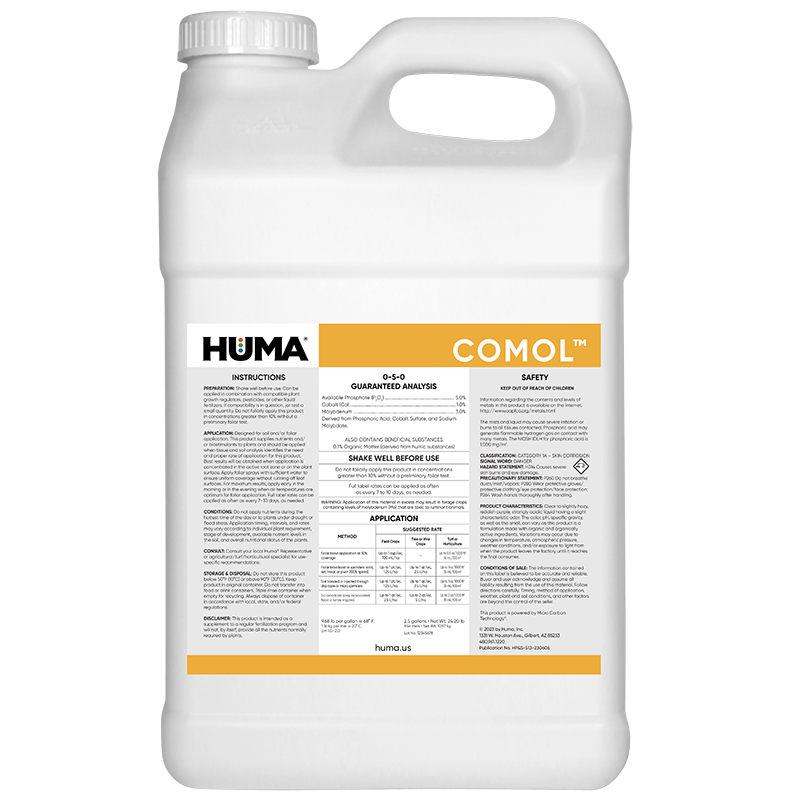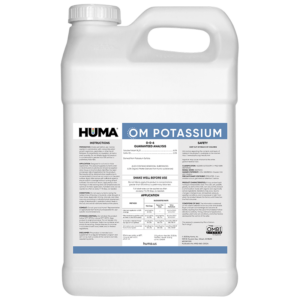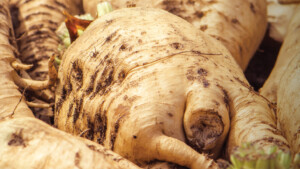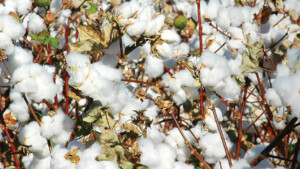Comol™
Benefits of Use:
- May be applied with Huma® Vitol® for a foliar nutrient balance for most crops to overcome stresses caused by severe weather or herbicide and pesticide residues
- Produces coenzymes necessary to convert nitrogen to amino acids for protein synthesis
- Stimulates natural production of enzymes that are required in ascorbic acid synthesis
- Buffers excessive ethylene concentrations in plant tissue
- Essential for nitrogen fixation in legumes (nitrogenase)
Deficiency Symptoms—When to Apply:
- In young plants, stunted growth or yellowish green leaves; in older leaves, light green followed by yellowing, drying, or shedding; often with abundant anthocyanins in the veins; chlorosis of entire leaf
- Shoots short, thin, growth upright and spindly, flowering reduced
- Premature fruit drop of crop; slow fruit development, smaller fruit size or not sufficiently colored
- Poor root system
- Plant stress from weather or chemical residues
- Limited nodule-forming bacteria in legumes
FAQs
Related Products
Related Case Studies
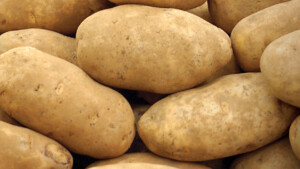
Fertil Humus® Soil Amendment Trial for Water Infiltration
Objective This field trial assessed the benefits of moisture infiltration enhancement that may be provided by the product Fertil Humus® at selected rates and timings. Materials & Methods The plot site selected for this trial was located in the southern portion of the Columbia Basin in Washington State. The Russet Burbank potato field was pivot-irrigated...

Huma® Program Increases Marketable Strawberry Yields 19%, With an ROI > $5,000/acre
Objective This field trial assessed the effects of an additional 8 foliar applications of Huma® products throughout the growing season on the yield of Monterey strawberries when compared with the grower’s standard crop nutrition program. Materials & Methods This trial was set up in a complete randomized-block design conducted during the growing season of April...
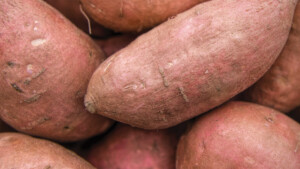
Huma® Program Increases Sweet Potato Yields 39%, With a 10:1 ROI
Objective This field trial was conducted in order to compare sweet potato crop yields and return on investment (ROI) obtained when a Huma® soil product (Zap®, for feeding soil biology and improving soil fertility) and 2 applications of 3 Huma® foliar nutrients (Jackpot®, Calcium, and Super Potassium®) were applied in various combinations. Materials & Methods ...
Related Blog Posts

Video: BHN Company Values
In this 4-minute video, BHN President/CEO Lyndon Smith speaks with us about BHN’s Company Values—Integrity, Win-Win-Win, Proactive Innovation, Relentless Pursuit of Excellence—and their impact on how we conduct business, treat our customers, and benefit the world.

Latest Edition of the BHN Newsletter, The Solution, Is Available
We love to hear stories from the people who use our products, and a number of those stories are included in this issue of The Solution. We begin with a report from Holden Research and Consulting on how use of certain Huma Gro® products on strawberries led to an ROI of over $3,400/acre. Amazing! Equally...

Why Are Humic Substances Called Acids?
By Richard Lamar, PhD Senior Director of Humic Research Bio Huma Netics, Inc. We are accustomed to seeing humic substances (humic and fulvic) in dry/granular form, and we tend to think of acids as liquids. So why are humic and fulvic substances called acids? All substances, solid AND liquid, have a chemical makeup. An acid...

